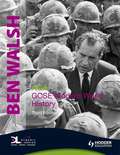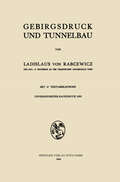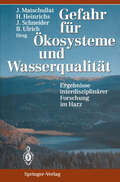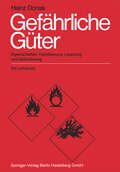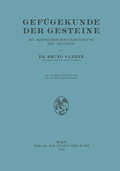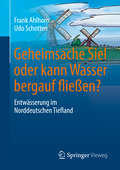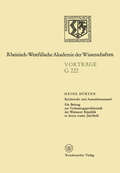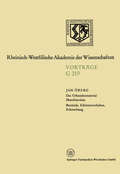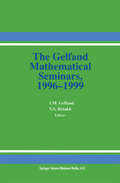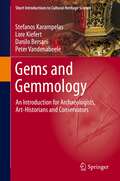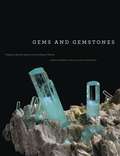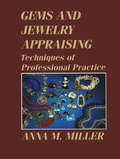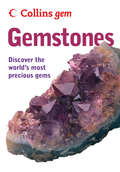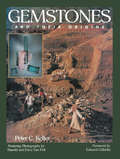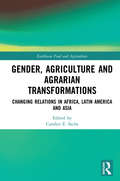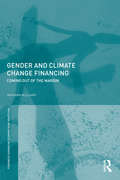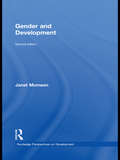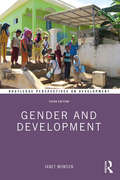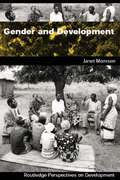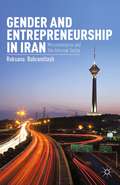- Table View
- List View
GCSE Modern World History (3rd edition) (PDF)
by Ben WalshProvide complete support for your GCSE Modern World History candidates with best-selling books and digital resources from an author you can really trust. An AQA-specific edition of the best selling textbook for GCSE Modern World History. It comprehensively covers the AQA specification and provides a winning combination that will meet the needs of all students. Clear, engaging and provocative author text which brings the period to life and summarises complicated history clearly without being simplistic. Focus Tasks which steadily deepen students' understanding of the content (exactly targeting each Key Issue of the AQA specification) while progressively building their history skills. Original and relevant source material - written and visual - all of which is used for historical investigation not just for illustration. State-of-the-art ICT support in the form of Dynamic Learning from an author who leads the field in developing the use of ICT to help refine students historical thinking. Authoritative interpretation of the AQA specification by an experienced trainer and teacher. Associated revision book in full colour. In its first and second editions this book has provided students with what they need to achieve their best; and provided teachers with what they need to teach a rewarding and worthwhile course. A winning combination - don't settle for less.
Gebäudeautomation in Wohn- und Wirtschaftsimmobilien: Energetische Einsparpotenziale durch Gebäudeautomation (Studien zum nachhaltigen Bauen und Wirtschaften)
by Giulio Saric Thomas GlatteMit Gebäudeautomation lassen sich Komfort und Sicherheit eines Gebäudes steigern. Dazu kommt das Potenzial, die Energieeffizienz der Immobilie zu erhöhen, was wirschaftliche Vorteile bei der Bewirtschaftung mit sich bringt. Diese Publikation untersucht verschiedene Smart-Home Technologien im Hinblick auf die Senkung der Energiekosten und vergleicht den ökonomischen Nutzen zwischen Wirtschafts- und Wohnimmobilien. Dabei werden die Anwendungsfelder Beleuchtung, Klimatisierung und Beschattung analysiert und bewertet.
Gebirgsdruck und Tunnelbau
by Ladislaus v. Rabcewicz Ladislaus von RabcewiczDieser Buchtitel ist Teil des Digitalisierungsprojekts Springer Book Archives mit Publikationen, die seit den Anfängen des Verlags von 1842 erschienen sind. Der Verlag stellt mit diesem Archiv Quellen für die historische wie auch die disziplingeschichtliche Forschung zur Verfügung, die jeweils im historischen Kontext betrachtet werden müssen. Dieser Titel erschien in der Zeit vor 1945 und wird daher in seiner zeittypischen politisch-ideologischen Ausrichtung vom Verlag nicht beworben.
Gefahr für Ökosysteme und Wasserqualität: Ergebnisse interdisziplinärer Forschung im Harz
by Jörg Matschullat Hartmut Heinrichs Jürgen Schneider Bernhard UlrichDer Eintrag von Luftschadstoffen ruft teilweise heftige Reaktionen in den betroffenen Ökosystemen hervor. Über Böden und Gesteine gelangen die belastenden Substanzen mit den Niederschlägen in die Grund- und Oberflächengewässer und bringen so mittel- bis langfristig auch eine Gefährdung der Trinkwasserqualität mit sich. Ausgehend vom Naturraum Harz, wird in dem vorliegenden Buch der Einfluß von Luftschadstoffen auf Gesteine, Böden, Gewässer, Bach- und Seesedimente sowie verschiedene an Gewässer gebundene Biozönosen untersucht. Im Anschluß daran werden verschiedene Meliorationsmöglichkeiten aufgezeigt und ein Ausblick auf die mögliche weitere Entwicklung des untersuchten Ökosystems gegeben.
Gefügekunde der Gesteine: Mit Besonderer Berücksichtigung der Tektonite
by Bruno SanderDieser Buchtitel ist Teil des Digitalisierungsprojekts Springer Book Archives mit Publikationen, die seit den Anfängen des Verlags von 1842 erschienen sind. Der Verlag stellt mit diesem Archiv Quellen für die historische wie auch die disziplingeschichtliche Forschung zur Verfügung, die jeweils im historischen Kontext betrachtet werden müssen. Dieser Titel erschien in der Zeit vor 1945 und wird daher in seiner zeittypischen politisch-ideologischen Ausrichtung vom Verlag nicht beworben.
Geheimsache Siel oder kann Wasser bergauf fließen?: Entwässerung im Norddeutschen Tiefland
by Frank Ahlhorn Udo SchottenThema des vorliegenden Buches ist der Umgang mit dem Wasser an der niedersächsischen Küste (hier: die Entwässerung der niedrig liegenden Landschaft), eine fundamentale Angelegenheit für die Menschen, die hier leben und arbeiten. Für ein junges Zielpublikum wird unterhaltsam erläutert, wohin das Wasser fließt und welche Anstrengungen unsere Vorfahren unternommen hatten, damit wir in dieser Landschaft (über)leben können. Darüber hinaus werden Veränderungen, die z. B. über den Klimawandel auf diese Landschaft einwirken, in die Entdeckungsreise der vier Protagonisten eingebunden.
Geisteswissenschaften: Vorträge. G 219 (Rheinisch-Westfälische Akademie der Wissenschaften #219)
by Jan ÖbergThe Gelfand Mathematical Seminars, 1996–1999 (Gelfand Mathematical Seminars)
by Vladimir S Retakh Israel M. GelfandDedicated to the memory of Chih-Han Sah, this volume continues a long tradition of one of the most influential mathematical seminars of this century. A number of topics are covered, including combinatorial geometry, connections between logic and geometry, Lie groups, algebras and their representations. An additional area of importance is noncommutative algebra and geometry, and its relations to modern physics. Distinguished mathematicians contributing to this work: T.V. Alekseevskaya V. Kac
Gems and Gemmology: An Introduction for Archaeologists, Art-Historians and Conservators (Short Introductions to Cultural Heritage Science)
by Peter Vandenabeele Stefanos Karampelas Lore Kiefert Danilo BersaniThis book provides a lucid introduction to the basics of gemmology. It familiarizes archaeologists, art historians and conservators with the science of gemstones and allows them to understand the basic concepts of their provenance, typology and treatments.Which are the main types of gems? What treatments can be applied? How does one analyse gems? How can gems contribute to archaeometrical research?This volume is written by four experts in the fields of gemmology and archaeometry and addresses both students who need an introduction to this field and professionals who want to refresh their knowledge of the topic. This work is part of a series of introductory texts that deal with a broad range of materials-related topics in archaeometry.
Gems and Gemstones: Timeless Natural Beauty of the Mineral World
by Lance Grande Allison AugustynGems are objects of wealth, icons of beauty, and emblems of the very best of everything. They are kept as signs of prestige or power. Given as tokens of love and affection, they also come in a kaleidoscopic array of hues and can be either mineral or organic. Gems can command a person’s gaze in the way they play with light and express rich color. And they can evoke feelings of passion, greed, mystery, and warmth. For millennia, gems have played an important role in human culture: they have significant value, both financially and within folklore and mythology. But just what are gems, exactly? This lavishly illustrated volume—the most ambitious publication of its kind—provides a general introduction to gems and natural gemstones, conveying their timeless beauty and exploring similarities among different species and varieties. Gems and Gemstones features nearly 300 color images of the cut gems, precious and semiprecious stones, gem-quality mineral specimens, and fine jewelry to be unveiled in a new Grainger Hall of Gems at The Field Museum in Chicago this October. The book and exhibition’s overarching theme will be the relationship between finished gems and their natural origin: while beautiful as faceted and polished pieces of jewelry, gems are often just as lovely—or even more so—as gemstones in their natural state. For example, an aquamarine or emerald as originally found in a mine with its natural crystal faces can be as stunning as any cut and polished gem prepared for a ring, bracelet, or charm. Thoughtful of both ancient and modern times, Gems and Gemstones also includes fun-filled facts and anecdotes that broaden the historical portrait of each specimen. When Harry Winston, for instance, donated the Hope Diamond to the Smithsonian in 1958, he sent it through the U.S. mail wrapped in plain brown paper. And for anyone who has ever marveled at the innovations of top jewelry designers, Gems and Gemstones features a dazzling array of polished stones, gold objects, and creations from around the world. Diamonds, sapphires, rubies, amethysts, pearls, topaz, amber—every major gem gets its due in what will be an invaluable source on the subject for years to come. Gems and Gemstones is the basis for the iPad app, available in the Apple iTunes App Store, Gems and Jewels.
Gems and Jewelry Appraising: Techniques of Professional Practice
by Anna M. MillerOnly a few years ago, if you needed an appraisal of The revolution in the personal property appraisals gems and jewelry for any reason, you asked your local field (of which jewelry is a part) is a little more than a jeweler, who hastily scribbled a one-line handwritten decade old. There now exist uniform standards and note. He or she usually performed the appraisal for procedures for personal property appraisers, classes free, and did so with reluctance, accommodating you in valuation techniques, and degree programs in the only because as a customer you held the promise of a valuation sciences. future sale. The price your jeweler may have assigned Professional jewelry appraisers are on the edge of to the jewelry was granted without the least regard a new vocation. Banks, insurance companies, and for market research, legalities, or ethics. In most in governmental agencies have all helped bring about stances, the estimate was no more than a properly the changes and contribute to the birth of the profes completed sales receipt. sion; they have realized that they can demand and Gemologists were usually pushed into the role of get high standards of performance and integrity from appraiser by their jeweler employers, who were eager jewelry appraisers, as they can from appraisers of real to gain an advantage over their competitors by adver property.
Gemstones (Collins Gem)
by Cally OldershawA handy guide identifying over 170 types of the world’s gemstones with beautiful colour photography taken from the Smithsonian Institution’s archives.
Gemstones and Their Origins
by P.C. KellerEach gem deposit-whether of primary origin in the parent rocks; or secondary as alluvial placers in valley floors, river gravels, or the sand of oceanic shelves presents an eloquent chronicle of the Earth's life story. It reveals to the expert the prodigious processes which formed the present crust of our planet, of which this volume discloses a small but exciting detail. The materials of the Earth's crust are the rocks. In this book, the author expounds on how they were formed, why they altered, why they became the cradles of precious gemstones, how they are categorized, and how they are now exploited by man. What initiates the growth of gemstones? How do they crystallize? Why do gemstones of the same species, originating from different sources, vary? What causes the occurrence of varieties? Why do diamonds, unlike other precious stones, occur not near the Earth's surface in its crust, but deep down beneath it in the upper mantle? These are only a few of the entrancing subjects discussed in this enlightening volume. The reader learns that the Earth is surprisingly alive and altering constantly-sometimes through slow and equable changes and at times by violent and tremendous cataclysms, events from which gemstones issue.
Gender, Agriculture and Agrarian Transformations: Changing Relations in Africa, Latin America and Asia (Earthscan Food and Agriculture)
by Carolyn E. SachsThis book presents research from across the globe on how gender relationships in agriculture are changing. In many regions of the world, agricultural transformations are occurring through increased commodification, new value-chains, technological innovations introduced by CGIAR and other development interventions, declining viability of small-holder agriculture livelihoods, male out-migration from rural areas, and climate change. This book addresses how these changes involve fluctuations in gendered labour and decision making on farms and in agriculture and, in many places, have resulted in the feminization of agriculture at a time of unprecedented climate change. Chapters uncover both how women successfully innovate and how they remain disadvantaged when compared to men in terms of access to land, labor, capital and markets that would enable them to succeed in agriculture. Building on case studies from Africa, Latin America and Asia, the book interrogates how new agricultural innovations from agricultural research, new technologies and value chains reshape gender relations. Using new methodological approaches and intersectional analyses, this book will be of great interest to students and scholars of agriculture, gender, sustainable development and environmental studies more generally.
Gender, Agriculture and Agrarian Transformations: Changing Relations in Africa, Latin America and Asia (Earthscan Food and Agriculture)
by Carolyn E. SachsThis book presents research from across the globe on how gender relationships in agriculture are changing. In many regions of the world, agricultural transformations are occurring through increased commodification, new value-chains, technological innovations introduced by CGIAR and other development interventions, declining viability of small-holder agriculture livelihoods, male out-migration from rural areas, and climate change. This book addresses how these changes involve fluctuations in gendered labour and decision making on farms and in agriculture and, in many places, have resulted in the feminization of agriculture at a time of unprecedented climate change. Chapters uncover both how women successfully innovate and how they remain disadvantaged when compared to men in terms of access to land, labor, capital and markets that would enable them to succeed in agriculture. Building on case studies from Africa, Latin America and Asia, the book interrogates how new agricultural innovations from agricultural research, new technologies and value chains reshape gender relations. Using new methodological approaches and intersectional analyses, this book will be of great interest to students and scholars of agriculture, gender, sustainable development and environmental studies more generally.
Gender and Climate Change Financing: Coming out of the margin (Routledge IAFFE Advances in Feminist Economics)
by Mariama WilliamsThis book discusses the state of global climate change policy and the financing of climate resilient public infrastructure. It explains the sources of tensions and conflict between developing and developed countries with regard to global climate protection policies, and highlights the biases and asymmetries that may work against gender equality, women’s empowerment and poverty eradication. Gender and Climate Change Financing: Coming Out of the Margin provides an overview of the scientific, economic and political dynamics underlying global climate protection. It explores the controversial issues that have stalled global climate negotiations and offers a clear explanation of the link between adaptation and mitigation strategies and gender issue. It also maps the full range of public, private and market-based climate finance instruments and funds. This book will be a useful tool for those engaged with climate change, poverty eradication, gender equality and women’s empowerment.
Gender and Climate Change Financing: Coming out of the margin (Routledge IAFFE Advances in Feminist Economics)
by Mariama WilliamsThis book discusses the state of global climate change policy and the financing of climate resilient public infrastructure. It explains the sources of tensions and conflict between developing and developed countries with regard to global climate protection policies, and highlights the biases and asymmetries that may work against gender equality, women’s empowerment and poverty eradication. Gender and Climate Change Financing: Coming Out of the Margin provides an overview of the scientific, economic and political dynamics underlying global climate protection. It explores the controversial issues that have stalled global climate negotiations and offers a clear explanation of the link between adaptation and mitigation strategies and gender issue. It also maps the full range of public, private and market-based climate finance instruments and funds. This book will be a useful tool for those engaged with climate change, poverty eradication, gender equality and women’s empowerment.
Gender and Development (Routledge Perspectives on Development)
by Janet MomsenGlobal financial problems, rising food prices, climate change, international migration – increasingly by women – conflict situations in many poor countries, the spread of tropical diseases such as malaria and dengue fever and the increased incidence of HIV/AIDS and TB, and changing patterns of trade have all added new dimensions to gender issues in developing countries. These problems are frequently being brought to public attention in the media and through long-haul tourism. Consequently students’ interest in gender and development has grown considerably in the last few years. This updated second edition provides a concise, accessible introduction to Gender and Development issues in the developing world and in the transition countries of Eastern and Central Europe. The nine chapters include discussions on changes in theoretical approaches, gender complexities and the Millennium Development Goals; social and biological reproduction including differing attitudes to family planning by states and variation in education and access to housing; differences in health and violence at major life stages for women and men and natural disasters and gender roles in rural and urban areas. The penultimate chapter considers the impact of broad economic changes such as the globalization of trade and communications on gender differences in economic activity and the final chapter addresses international progress towards gender equality as measured by the global gender gap. The text is particularly strong on environmental aspects and the new edition builds on this to consider the effects of climate change and declining natural resources illustrated by a case study of changing gender roles in fishing in India. There is also enhanced coverage of topics such as global trade, sport as a development tool, masculinities, and sustainable agriculture. Maps, statistics, references and boxed case studies have been updated throughout and their coverage widened. Gender and Development is the only broad based introduction to the topic written specifically for a student audience. It features student friendly items such as chapter learning objectives, discussion questions, annotated guides to further reading and websites. The text is enlivened throughout with examples and case studies drawn from the author’s worldwide field research and consultancies with international development agencies over four decades and her experience of teaching the topic to undergraduates and postgraduates in many countries. It will be an essential text for a variety of courses on development, women’s studies, sociology, anthropology and geography.
Gender and Development (Routledge Perspectives on Development)
by Janet MomsenGlobal financial problems, rising food prices, climate change, international migration – increasingly by women – conflict situations in many poor countries, the spread of tropical diseases such as malaria and dengue fever and the increased incidence of HIV/AIDS and TB, and changing patterns of trade have all added new dimensions to gender issues in developing countries. These problems are frequently being brought to public attention in the media and through long-haul tourism. Consequently students’ interest in gender and development has grown considerably in the last few years. This updated second edition provides a concise, accessible introduction to Gender and Development issues in the developing world and in the transition countries of Eastern and Central Europe. The nine chapters include discussions on changes in theoretical approaches, gender complexities and the Millennium Development Goals; social and biological reproduction including differing attitudes to family planning by states and variation in education and access to housing; differences in health and violence at major life stages for women and men and natural disasters and gender roles in rural and urban areas. The penultimate chapter considers the impact of broad economic changes such as the globalization of trade and communications on gender differences in economic activity and the final chapter addresses international progress towards gender equality as measured by the global gender gap. The text is particularly strong on environmental aspects and the new edition builds on this to consider the effects of climate change and declining natural resources illustrated by a case study of changing gender roles in fishing in India. There is also enhanced coverage of topics such as global trade, sport as a development tool, masculinities, and sustainable agriculture. Maps, statistics, references and boxed case studies have been updated throughout and their coverage widened. Gender and Development is the only broad based introduction to the topic written specifically for a student audience. It features student friendly items such as chapter learning objectives, discussion questions, annotated guides to further reading and websites. The text is enlivened throughout with examples and case studies drawn from the author’s worldwide field research and consultancies with international development agencies over four decades and her experience of teaching the topic to undergraduates and postgraduates in many countries. It will be an essential text for a variety of courses on development, women’s studies, sociology, anthropology and geography.
Gender and Development (Routledge Perspectives on Development)
by Janet MomsenThis revised and updated third edition of Gender and Development provides a concise, accessible introduction to gender and development issues in the developing world and in the transition countries of Eastern and Central Europe. The nine chapters include discussions on: changes in theoretical approaches, gender complexities and the Sustainable Development Goals; social and biological reproduction including changing attitudes to family planning; variation in education and access to housing; differences in health and violence at major life stages for women and men; natural disasters, climate change and declining natural resources, and gender roles in rural and urban areas. There is also enhanced coverage of topics such as global trade, sport as a development tool, masculinities and sustainable agriculture. Maps, statistics, have been updated throughout and their coverage widened. New case studies have been added on Bangladesh, on violence in Peru and India, halal tourism and on garbage collection in the Maldives. The book features student-friendly items such as chapter learning objectives, discussion questions, annotated guides to further reading and websites. The text is enlivened throughout with examples and case studies drawn from the author’s worldwide field research and consultancies with international development agencies over four decades and her experience of teaching the topic to undergraduates and postgraduates in many countries. Gender and Development is the only broad-based introduction to the topic written specifically for a student audience. It will be an essential text for a variety of courses on development, women’s studies, sociology, anthropology and geography.
Gender and Development (Routledge Perspectives on Development)
by Janet MomsenThis revised and updated third edition of Gender and Development provides a concise, accessible introduction to gender and development issues in the developing world and in the transition countries of Eastern and Central Europe. The nine chapters include discussions on: changes in theoretical approaches, gender complexities and the Sustainable Development Goals; social and biological reproduction including changing attitudes to family planning; variation in education and access to housing; differences in health and violence at major life stages for women and men; natural disasters, climate change and declining natural resources, and gender roles in rural and urban areas. There is also enhanced coverage of topics such as global trade, sport as a development tool, masculinities and sustainable agriculture. Maps, statistics, have been updated throughout and their coverage widened. New case studies have been added on Bangladesh, on violence in Peru and India, halal tourism and on garbage collection in the Maldives. The book features student-friendly items such as chapter learning objectives, discussion questions, annotated guides to further reading and websites. The text is enlivened throughout with examples and case studies drawn from the author’s worldwide field research and consultancies with international development agencies over four decades and her experience of teaching the topic to undergraduates and postgraduates in many countries. Gender and Development is the only broad-based introduction to the topic written specifically for a student audience. It will be an essential text for a variety of courses on development, women’s studies, sociology, anthropology and geography.
Gender and Development
by Janet Henshall MomsenIn third world countries gender roles are different from those in western countries. This reality is of utmost interest for development policy makers. planners and project designers from donor countries.More often than not, development projects, sponsored and implemented by western organizations, reflect ethnocentric biases about the sexual division of labour, rights and responsibilities, based on standards from the donor country. Too many projects have failed or not had the intended beneficial effect on those in need, because they were administered with very little insight into gender relations.This volume deals with the importance of gender relations in crucial areas of development such as agriculture, employment, housing, transport, health and household management, and it underlines the necessity of having statistical materials that realistically reflect gender differentials.
Gender and Entrepreneurship in Iran: Microenterprise and the Informal Sector
by R. BahramitashIran is estimated to have the third largest informal sector in the MENA region a major source of income for many low-income households whose numbers are growing as sanctions tighten. Gender and Entrepreneurship in Iran provides insight into the role of informal networks in employment creation in Iran from a gender perspective. Drawing upon theories of social capital, social network, and the postcolonial feminist critique of mainstream development, this analysis sheds light on the ways in which poverty and unemployment may be tackled.
